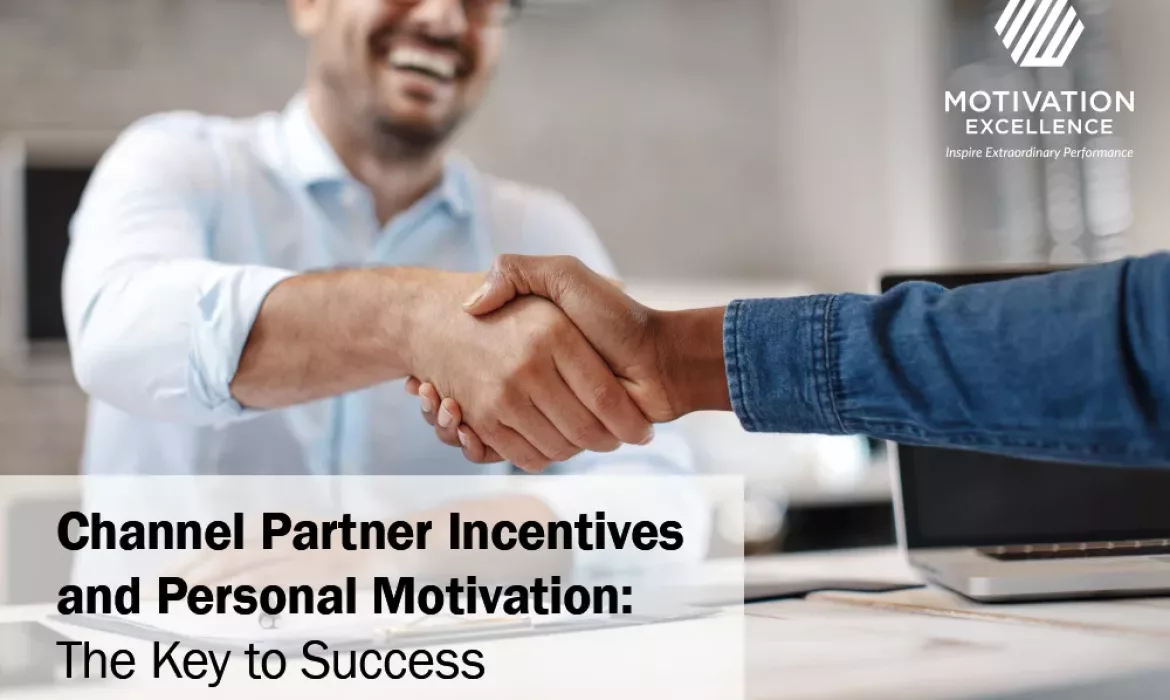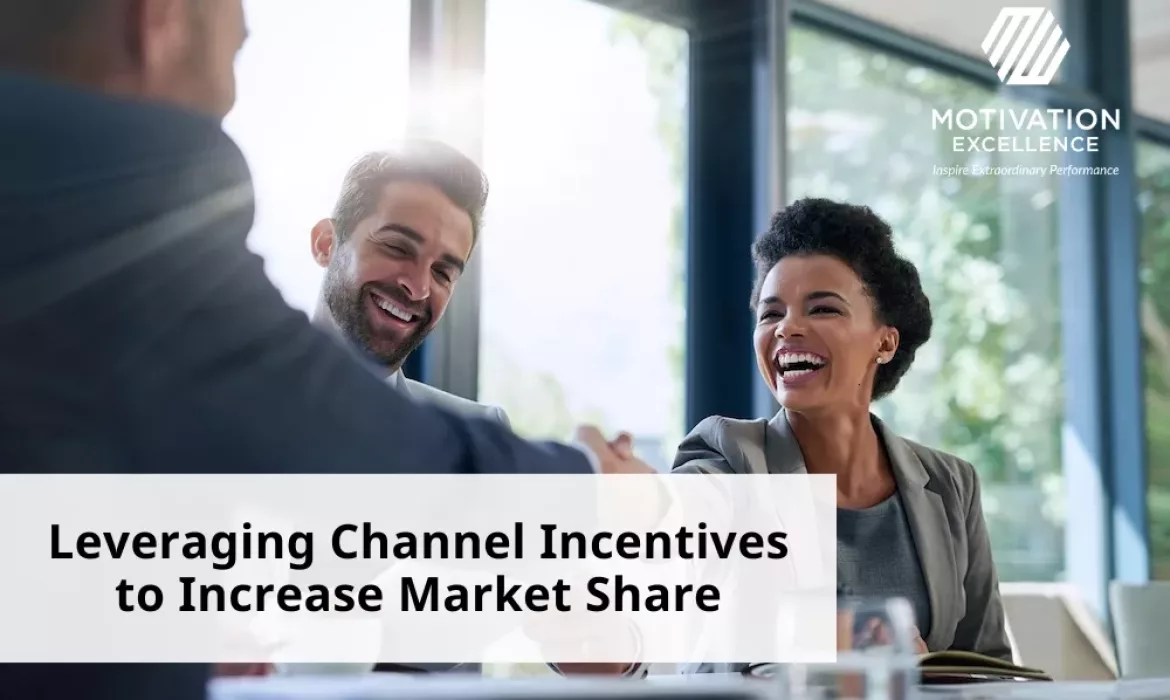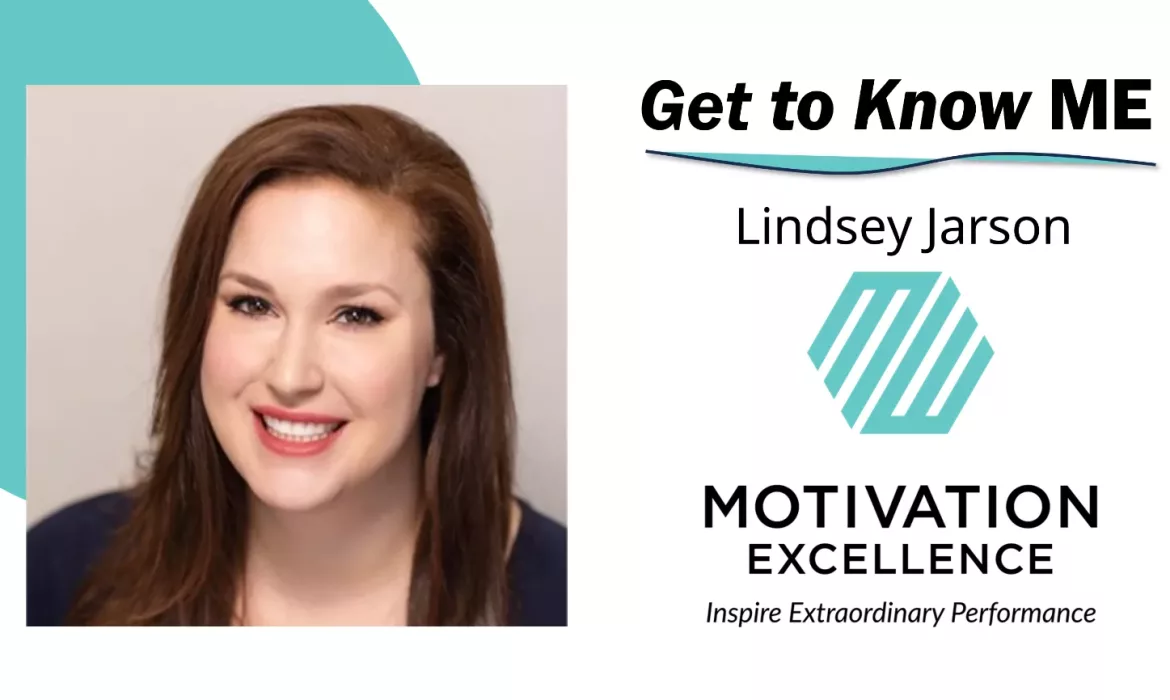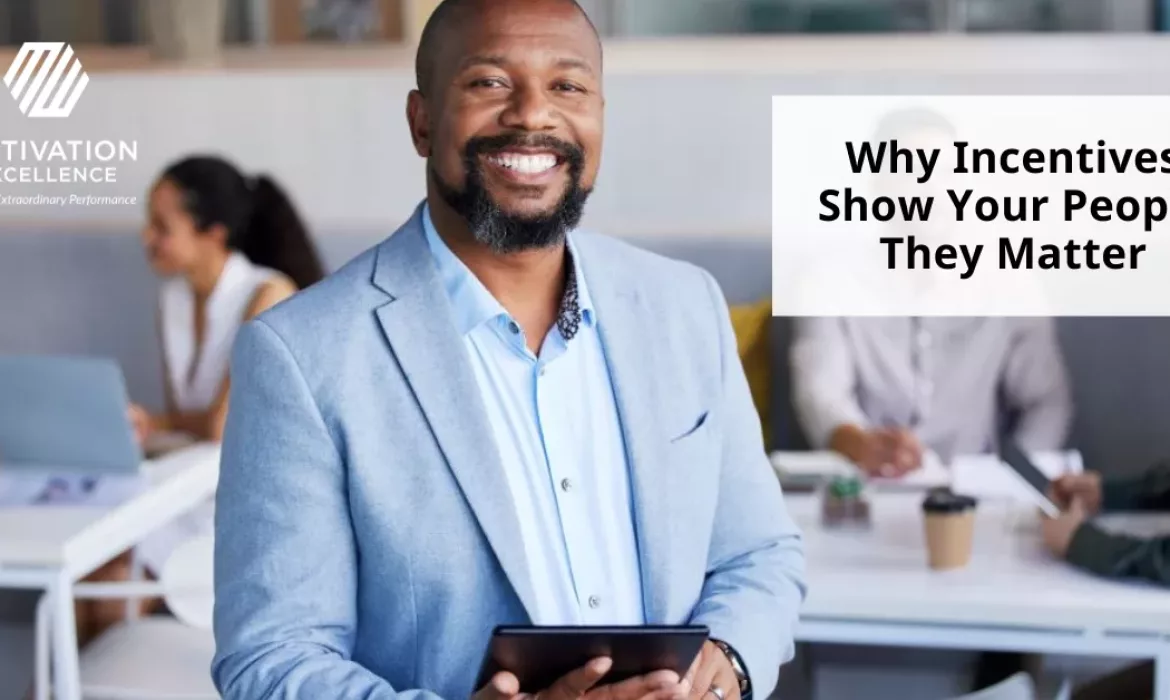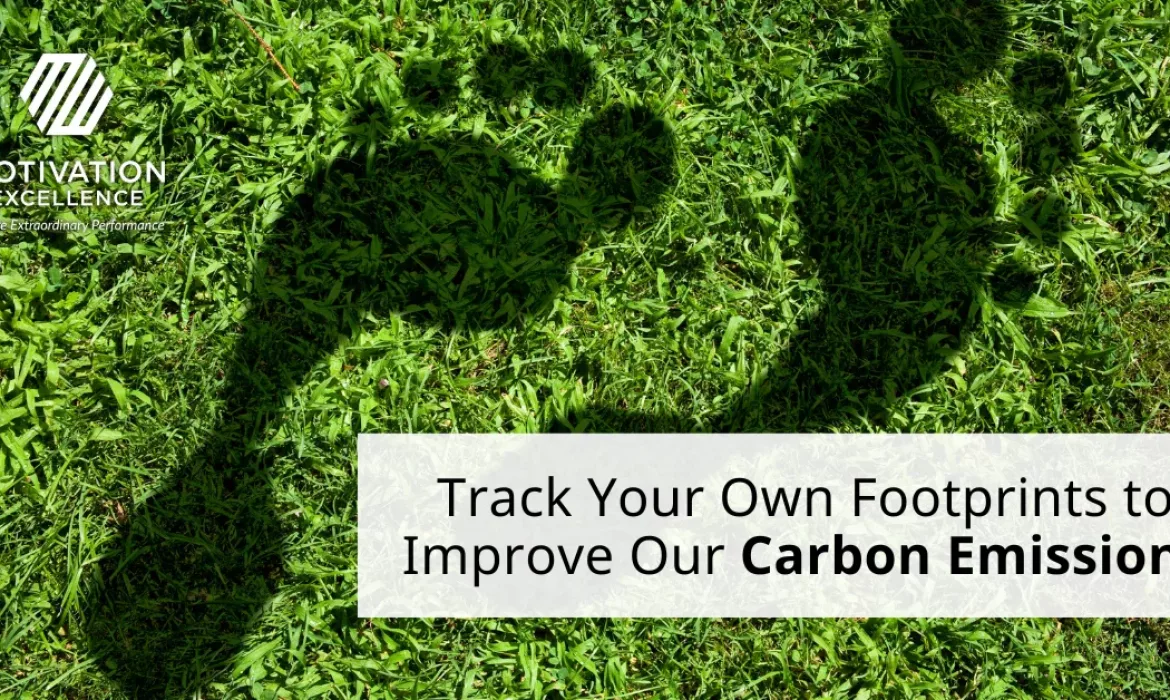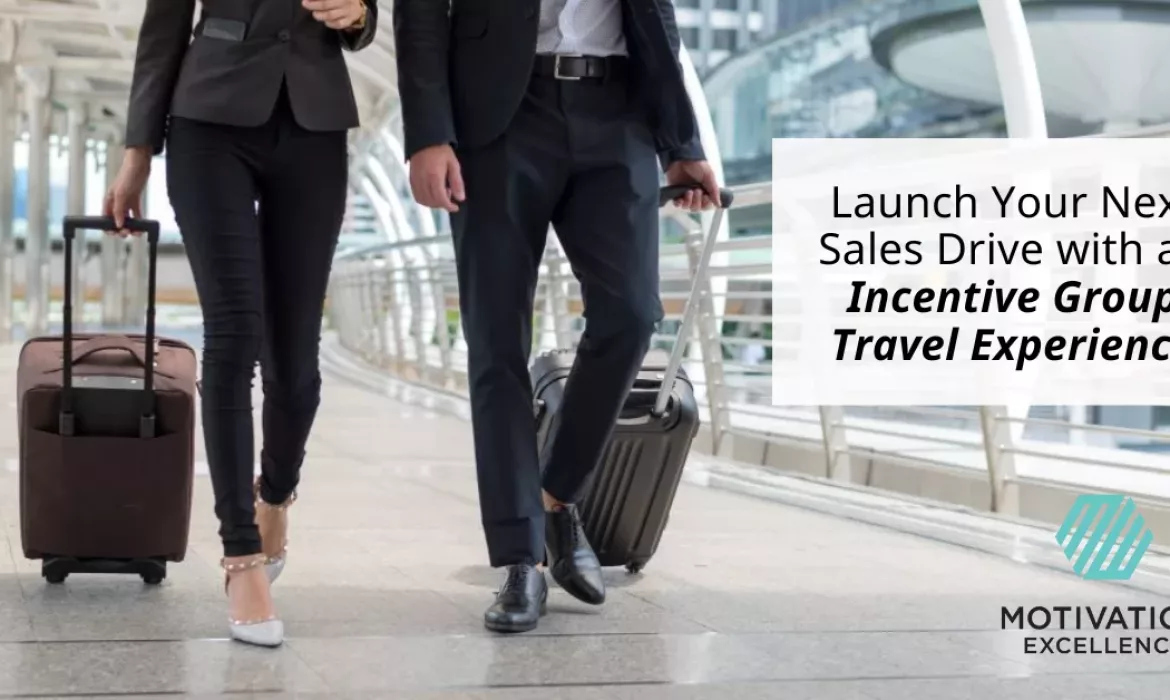Channel Partner Incentives and Personal Motivation – The Hidden Link
At Motivation Excellence, we specialize in creating innovative channel partner incentive programs that motivate distributors, dealers, and other partners to excel. We understand the intrinsic link between channel partner incentives and personal motivation. This post delves into this connection, exploring how channel partner incentives can drive motivation using real-world case studies as examples.
Personal Motivation in Channel Partners
Personal motivation is crucial in the context of any incentive. It’s a special case with channel partners, who are external to your company, often owning businesses that sell your products, and perhaps your competitors’ products too. Understanding what drives them—whether it’s a sense of achievement, recognition, or personal/professional growth—is vital. Channel partner incentives are not just about bonuses or perks for past actions; they are about creating opportunities for partners to achieve and exceed shared goals now and into the future. These particular incentives are about loyalty and keeping your brand top of mind in their business.
Case Study: Success in the Fencing Industry
To illustrate the effectiveness of a well-designed channel incentive program, consider our case study in the fencing industry.
Business Issue
Our client needed to restructure and unify their approach to build stronger relationships with contractors, increase market share, and boost customer loyalty. They also aimed to provide educational resources, networking opportunities, and better access to company leadership.
Our Solution
We developed an interactive Buying Show weekend that combined a fun destination with top vendor partners, exclusive deals, and financing specials. The event featured learning and networking sessions and world-class entertainment. Funding came from qualifying contractors’ incremental sales and supplier contributions, and we supported the program with a performance tracking website, an engagement campaign, and best practices webinars led by company leadership.
Results
- Attendee Growth: The number of attendees grew by 226% over 12 years, with attendees comprising over 71% of the customer base.
- Sales Growth: Median sales growth reached 214%, the average growth was 230%, and the top 25% achieved a 263% average growth.
The Buying Show became a must-attend event, significantly enhancing business relationships and revenue, with the program continuing successfully since its inception in 2012. The personal motivation for these channel partners has become to always qualify for the next event, and for some, to move up the ranks within the attendee audience to capture top-performance awards.
Case Study: HVAC and Plumbing Distributor
Another example of success with a channel partner incentive program involves a nationally ranked and independently owned HVAC and plumbing distributor seeking to drive incremental sales and gain market share with a self-funded travel incentive for their loyal customers and preferred prospects.
Business Atmosphere
Following the slow recovery from a major economic downturn, our client aimed to energize their market presence. They sought an engaging and self-funded travel incentive to reward their loyal customers and attract preferred prospects.
Creating a Solution
Collaborating with our client’s financial and marketing teams, we analyzed historic sales data, gross profit, and growth potential to develop a meticulous goal-setting structure and tracking system. Participants earned credit for meeting personalized goals and additional credit for surpassing them.
Self-Funded Travel Reward
We designed a travel incentive program where customers and their sales representatives and managers within our client’s company could earn a travel award by achieving predetermined incremental sales growth. This approach ensured the program was self-funded. Including our own company representatives in the travel experience significantly strengthened business relationships.
Support for Success
We partnered with our client’s sales reps and managers to create compelling presentations for their customers and prospects. An online performance tracking platform enabled company reps and customers to monitor daily progress toward goals. Monthly electronic reports and updates fostered ongoing engagement between customers and the sales team.
Rewarding Results
The revenue and profit growth for enrolled participants consistently outperformed non-enrolled participants. Over five years, the number of travel award winners increased from 75 couples to 250 couples. This ongoing self-funded travel incentive program led to real growth, increased market share, enhanced customer loyalty, and stronger relationships between customers and the sales team. The personal motivation became the enduring emotional connections with our client’s people combined with the value of their products. The extra motivation came from aspirational travel destinations.
Self-Sustaining Motivation
Channel partner incentives can create self-sustaining motivation by helping partners realize their potential and rewarding them for incremental growth with aspirational and educational group events. This continuous cycle of achievement and motivation leads to long-term productivity and loyalty to your company.
By designing incentive programs that address personal motivators, companies can drive their channel partners to achieve remarkable results. A holistic approach ensures that partners feel valued and recognized, encouraging them to strive for excellence consistently. Your business grows along with theirs, for the win-win scenario.
Contact us today to design and implement your channel incentive program or other incentive and rewards programs.
Here at Motivation Excellence, we are all about innovative channel partner incentive programs designed to motivate distributors, resellers, and other partners to excel in their roles. Of course, there are other organizations that do the same things we do. We all have one thing in common: we understand the intrinsic link between channel partner incentives and personal motivation.
The link is a hidden one in the sense that many people do not know it exists. It is one thing to know that channel partner incentives can be motivational. It’s another thing to know why. That’s what we want to discuss in this post. It is all tied to something known as the Herzberg theory.
Understanding What Motivates Partners
Frederick Herzberg was a well-known psychologist who made his mark as one of the most influential people in the business management world. In the 1950s, he began looking into what motivated people in the workplace. His research eventually led to the development of a theory which was formally named the Motivator-Hygiene theory. We just call it the Herzberg theory for short.
In a nutshell, his theory suggests that people are motivated by different things that can be divided into two categories. The Motivator category involves internal things like satisfaction, recognition, and the sense of achievement. The Hygiene category involves external things like salary, bonus pay, company policies, and supervision.
Herzberg theorized that the short-term gains realized through external motivators were lost once those motivators were taken away. Likewise, supporting internal motivators with external counterparts enhances productivity. Therein lies the link.
The two types of motivators feed off one another. Promoting one while ignoring the other does not achieve the best possible results. So when it comes to creating truly successful channel partner incentive programs, the key is to find the right balance between them.
The Idea of Personal Motivation
Going beyond the Herzberg theory leads us to the idea of personal motivation. What motivates an individual to be the best they can be? Is it a sense of achievement? Is it merely an intrinsic desire to always be the best? The actual trigger for any one person is less important than actually coming up with the channel partner incentives most likely to trigger partners to take action.
Channel partner incentive programs give partners a reason to explore their own personal motivations. But it needs to be understood that a bonus or perk is not the same thing as a channel partner incentive. Bonuses and perks are one-time motivators offered in response to past actions. Channel partner incentives are an invitation to do better both now and in the future.
Channel partner incentive programs place a reward in front, where partners can clearly see it. As partners work to receive that reward, they come to realize just what they are capable of. They take a sense of pride and satisfaction in their own accomplishments even as they seek to win the proverbial prize.
Incentives Can Be Self-Sustaining
Channel partner incentives can be self-sustaining in the sense that they train partners in the fundamental truth that they can be better at what they do. As partners accomplish goals and understand their own capabilities, they personally motivate themselves to stretch further. The more they accomplish, the more they want to accomplish in the future.
Leveraging Channel Incentives to Increase Market Share
Here at Motivation Excellence, employee incentive and rewards programs are a big part of what we do. But they are not all we do. We engage with organizations to create a variety of incentive programs, including sales incentive programs and channel incentives.
We help organizations leverage channel incentives to increase market share. Incentive programs are a terrific way to motivate channel partners. Incentives can run the gamut from travel experiences to merchandise rebates and certain types of non-cash rewards. The key is to figure out what makes channel partners tick so that you can create an incentive program uniquely tailored to each one.
Channel Incentive Basics
The foundation of this entire discussion is an organization’s channel partners. Channel partners are distributors, retailers, resellers, etc. Virtually every entity involved in the sales chain is considered a channel partner. Some industries have longer chains than others. Nevertheless, unless an organization is selling directly to end customers with no operators in between, there are channel partners involved.
Increasing market share from a channel partner perspective is all about encouraging those partners to prioritize your organization’s products or services. You want your organization to be given priority over the competition. But channel partners need a reason to do so. That is where channel incentives come in.
A channel incentive provides the reason for selling a bit harder. The right incentive can encourage partners to increase their focus and efforts on what your company offers. It can motivate them to work on market penetration to establish residual sales.
Expanding to New Markets
Market penetration is a big issue among organizations looking to increase their share. Greater penetration leads to new markets, and new markets boost both share and revenues. How do channel incentives play into such market expansion?
Imagine using a channel incentive program to encourage partners to go after previously untapped markets. They only receive the benefit if they manage to penetrate those markets. An incentive gives them the reason to put in the time and effort.
There is an added bonus in this regard: expanding into previously untapped markets requires that channel partners have an appropriate level of expertise about your products and services. If partners want the incentive badly enough, they will make the effort to learn everything they can about your organization.
Ultimately, you should be left with channel partners that know your products and services inside and out. They can represent your organization as they work to expand your reach. Everybody wins as a result: your organization, your partners, and end customers.
Fostering Loyalty and Commitment
There is a downside to leveraging channel incentives as a way of increasing market share: potentially crafting a program that emphasizes numbers more than anything else. When the only goal of increased market share is a higher number, whether it is sales volume or total revenues, it doesn’t take long for the luster to wear off. Numbers are just that. They are numbers that channel partners can grow used to and ultimately ignore.
An ideal channel incentive goes beyond mere numbers to foster loyalty and commitment. A good program engages with partners as much as customers. It encourages partners to take an active interest in promoting your organization’s growth and prosperity. When your organization grows and prospers, so do your channel partners. You want them to own that.
Channel incentive programs can be powerful tools for increasing market share. If you would like to know more about how Motivation Excellence can be involved in designing and implementing incentives for your channel partners, reach out at your earliest convenience. Let us create an incentive program like no other.
Cultural Awareness, Competence and Intelligence – Which Do You Have?
When we speak about culture in a business setting, we are often referring to the general vibe of the company. It may be comprised of its goals, mission and vision statements, employee interactions and added non-cash company benefits, like charity days, and reward and recognition programs.
Cultural awareness, however, is a different topic altogether. Having cultural awareness, or going deeper to cultural competency or intelligence, adds to the company culture, but it’s an independent, and important, key to a successful business. The website Seek details many ways in which recognizing and utilizing cultural differences can help a company. These include:
- Striving for nuanced but clear communication
- Refining ideas around conflict resolution
- Boosting productivity and innovation with new perspectives
- Understanding when/why employees feel included and respected
If your business deals internationally, having a strong grip on cultural details is obviously extremely important. As with most things, there are levels of understanding we can strive to achieve. We will lay them out for you to gauge where you land.
Awareness – The Foot in the Door
According to EasyLlama.com culture is the collective term used to identify the customs, social behavior, and ideas of a particular people or society. Think of culture like a recipe with ingredients such as:
- Traditions
- Language
- Nationality
- Beliefs
- Community connections
- Personal identity
- Food
- Arts
Being culturally aware is the base level of understanding. You recognize your coworker or neighbor grew up with a different background that influences their current lifestyle, choices and actions. Furthermore, Georgetown University points out that cultural awareness also reflects how you react to people of other cultures when they are very different from your own.
Competency – Joining the Conversation
Like awareness, cultural competency refers to the recognition of and reaction to different cultures within your sphere and then adds in the ability to function and interact with people of different backgrounds. Diversity Atlas states that to be competent you need to be aware of your own assumptions as you interact with people. Companies that are considered culturally competent have policies that consider culture-based differences in every aspect of work. For us at Motivation Excellence, we work with people all over the world as part of our incentive group travel programs. Knowing the nuances of how people work in Thailand, versus Greece, versus Hawaii helps us pave the way for a more enjoyable travel experience for our clients.
Being culturally competent can be displayed right in the office too. Do you think about what kinds of food people don’t, won’t or can’t eat because of their upbringing, dietary needs or personal preferences? Does your office recognize holidays other than the national holidays celebrated in the United States? Your very own people can be the best source of suggestions and information when it comes to highlighting various cultures in the office – just ask around!
Intelligence – Being Part of the Solution
Shown in short as CQ, cultural intelligence is especially important for companies working in a global atmosphere. Diversity Atlas says companies with CQ are sensitive to different ways of thinking and problem solving which improves work innovation. CQ requires flexibility and adaptability and relies heavily on emotional and social intelligence.
CQ is particularly important for governments, public sector businesses and non-profit organizations. It’s a great skill set for managers to have in any business that is hiring from a diverse talent pool. According to PennState Extension, having high CQ gives leaders the ability to interpret someone’s behavior in the same way that a person’s friends or family would. In return, if an employee feels like their manager understands and respects their culture, they’re more likely to trust the manager and the company. That contentment leads to lower turnover and higher productivity.
If you’re interested in learning more about developing CQ, MindTools.com delves into the four traits high CQ people exhibit:
- A drive to learn about other cultures
- Knowledge of how cultures influence behaviors
- Strategies to respond to cultural differences
- Acting in culturally sensitive ways
Level Up
No matter where you are on the stairs of cultural understanding, there’s always room to move up. According to the UN, three-quarters of the world’s major conflicts include a cultural dimension. You may not be solving an equation for world peace in your own life, but having a better grasp of how backgrounds influence thought processes and reactions is a great skill to nurture.
Every year, May 21st is the World Day for Cultural Diversity, also known as Diversity Day. You can click on the link to learn more about it and how you can celebrate it in your own home or workplace. Our world cultures are becoming increasingly intertwined. Those who are interested in learning from and interacting with people from different backgrounds will always be the ones moving forward faster. It’s not always easy, but the most rewarding things rarely are.
4 Not-So-Obvious Benefits of Non-Cash Incentive Programs
Organizations are used to offering cash incentives as a way to motivate employees and contractors. Motivating the sales team with cash bonuses is a classic example. We take a different approach at Motivation Excellence. We prefer non-cash incentive programs such as personalized rewards for employees or travel incentives. We believe they can ultimately accomplish more than their cash alternatives.
The sky is truly the limit when it comes to coming up with non-cash incentives. We are big fans of travel experiences. But non-cash incentive programs can also reward employees and contractors with event tickets, merchandise, and points that can be redeemed for a variety of experiences.
Does your organization offer any non-cash incentive programs? If not, we encourage you to take a second look at how you incentivize your team. Below are four not-so-obvious benefits of going the non-cash route.
1. Adding Value to the Incentive
We prefer non-cash incentives because we believe they boost loyalty and increase the emotional connection between team members and employers. We see this happening in multiple ways, beginning with the concept of adding value to an incentive program.
Cash is valuable to employees. That much is true. But employees do not tend to think of the value of cash from the employer’s perspective. Cash compensation is just expected. Therefore, it can be easily taken for granted.
Non-cash incentives are different. Employees tend to attach more value to them. For example, offer your team 4–5-star travel experiences and they will associate those experiences with a higher value – even if they actually cost less than offering team members cash bonuses. It is the highly personal nature of travel that leads to the higher perception of value.
2. Creating an Emotional Bond
Non-cash rewards, like personalized gifts and tickets to popular events, are considered more thoughtful. It takes a lot more thought and effort to procure event tickets than it does to throw a few hundred dollars into a team member’s paycheck. That extra time and effort tells employees that they matter.
When employees feel valued, they are more likely to develop a positive emotional bond with their employers. The more personal an incentive program feels, the more successful it will be in its ability to incentivize. But more importantly, it will foster a stronger emotional bond.
3. Creating Camaraderie Rather Than Competition
With all our experience in non-cash incentive programs, we have discovered something curious: non-cash incentives are more likely to inspire camaraderie among team members. Take travel experiences once again. An entire team sharing similar travel experiences – even if they do not travel at the same time – have something in common. They bond over the shared experience.
On the other hand, cash incentives tend to foster competition. This is not necessarily a bad thing in and of itself. But sometimes, you want camaraderie rather than competition. Sometimes it is better for team members to want everyone to benefit from an incentive program rather than individuals competing for a single prize.
4. Better Alignment With Company Culture
Last but not least, non-cash incentive programs can be tailored to align with company culture. But that’s not all. Organizations can utilize non-cash benefits to change or enhance the company culture. This makes them a great tool for creating the kind of environment and culture an organization strives for.
Cash benefits do have a place at the table. But more often than not, non-cash incentive programs are where it’s at. They not only incentivize and inspire, but they also help increase loyalty and foster an emotional connection between team member and company. Non-cash incentive programs are definitely worth a solid look if your organization doesn’t currently use them. Contact us today to design your incentive and rewards program with us.
Get to Know ME with Lindsey Jarson
Meet Lindsey Jarson, our Get to Know ME spotlight this month! Lindsey joined us in 2023. She’s holding down the accounting fort at our Traverse City location, but her role extends to any supplier that needs to be paid. She’s camera-shy, so no video with her, but you can quickly read below about what brings her joy and satisfaction. Thanks, Lindsey, for sharing with us!
What’s your current title and how long have you been in the incentive industry?
I am an Accounts Payable Associate. It’s been a little under a year since I joined the industry.
What do you like about your job?
I love the fast-paced nature of the work we do at Motivation Excellence. It’s rewarding to ensure accurate financial data and make sure our vendors get paid on time!
What’s something you want to share about the people you work with at Motivation Excellence?
Everyone here is extremely hard-working and always willing to lend a hand. It’s a great atmosphere.
What motivates you to accomplish things in your life (work or personal)?
The sense of accomplishment in meeting deadlines and hitting my goals and the opportunity to contribute positively to the world keep me inspired and focused.
What do you enjoy doing outside of work?
I enjoy reading thrillers, hiking with my pup, and traveling!
What’s a bucket list item you can’t wait to cross off?
I’d love to go to Europe (someday)!
Why Incentives Show Your People They Matter
Motivation Excellence, a channel incentives and sales incentives company, discusses why incentives show your employees that they matter.
Track Your Own Footprints to Improve Our Carbon Emissions
What exactly is a carbon footprint? According to the Nature Conservancy it’s the total amount of greenhouse gases that are generated by our actions. Greenhouse gases include carbon dioxide, methane and nitrous oxide, with carbon dioxide accounting for nearly 80% of global human-caused emissions. You can actually calculate your personal carbon footprint on a variety of websites.
Listen to the Experts
Greenhouse gases are causing our planet’s temperature to rise, which is known as global warming. The gases we emit actually trap the heat from the sun inside our atmosphere. The root cause is from humans burning fossil fuels. These are some of the big ways we’ve caused the world to warm faster now than at any other point in history:
- Generating power
- Manufacturing goods
- Cutting down trees
- Producing food
- Consuming too much
- Leaving behind too much waste
There are things each of us individually can do to help mitigate our own carbon footprint.
- Avoid transportation if you can – get on that bike, or take a walk instead
- Reduce your energy consumption – are solar panels an option?
- Reuse rather than buy new – find that trendy thrift store near you
Maybe We Can Help
David Jobes, the owner and CEO at Motivation Excellence, has long been eco-minded. When he purchased the company in 2018, he introduced a “no paper policy.” Of course, we all use some paper, but we now file things in the cloud rather than in the dozens of filing cabinets we ended up selling or donating. He also used many eco-conscious options when designing our new headquarters a few years ago, including carbon-neutral floors, LED motion-activated lights, and a living wall of moss to reduce humidity and produce oxygen.
I decided to ask my colleagues what they do to reduce their carbon footprints. Maybe they’ll give you an idea or two!
Lilly, in our travel department, says she:
- Leaves reusable bags in her car so she doesn’t forget them when she shops
- Omits all animal products from her diet and lifestyle
- Loves the secondhand shops for furniture and clothing
Jillian works in our Traverse City office and collects bubble wrap from the building janitor to use for her own shipping. She also donates it to local thrift stores so they can wrap delicate treasures heading to a new home.
Josee, our warehouse coordinator, likes to:
- Hit resale shops
- Use reusable bags and water bottles
- Turn off the lights when she leaves a room
- Consume the food she buys, rather than buy so much she has to throw some away
Michelle, our merchandise buyer, opts for conservation over convenience by:
- Having fabric napkins and reusable party-ware for entertaining
- Using a cooler-type bag for office lunches, and opting for fabric bags over plastic baggies
- Switching soap dispensers to refillable ones
- Composting year-round
Allison, our sales support assistant, offers that she:
- Uses products from LastObject that replace single-use items
- Switched to LED lighting, and uses timers
- Is very mindful of fully using groceries and personal products to reduce waste
Rhonda, our VP of Sales, looks at ways to conserve energy, like:
- Driving a hybrid car
- Installing solar panels on her home
- Switching from jugs of laundry detergent to sheets that come in a recycled box
Personally, I have several things I do consistently, like:
- Waiting for multiple needs before doing an online order
- Having recycling receptacles in nearly every room
- Rinsing out glass and plastic food containers so they can be recycled rather than trashed
I’m also starting to cut up t-shirts to use in lieu of paper towels and napkins. I’m not great at using them consistently yet, but I’m working on it.
Take One Step at a Time
And that’s just it, right? We all need to work at being better stewards of our own space on Earth. Convenience is amazing, but it will never be better than healthy living in a world full of renewable resources, clean water and air, and green spaces to enjoy! So, adjust your shopping habits, switch to reusable containers, or dig your own garden this summer and watch your carbon footprint start to fade. Even if it’s just a little, you can feel good about it, and it will likely lead to more adjustments in the future. Good luck!
Launch Your Next Sales Drive With an Incentive Group Travel Experience
Motivation Excellence, an incentive and rewards company, discusses how to power your next sales drive with incentive group travel experience.
Get to Know ME with Claire Urness
Meet Claire Urness, from our Performance Management team! She hasn’t been with us a year quite yet, but she’s already found she feels right at home in our Schaumburg headquarters. A self-described “shy person,” we appreciate her willingness to sit down with us for this month’s Get to Know ME edition. Read on and watch our short video to learn more about Claire!
What’s your current title and how long have you been in the incentive industry?
My current title is Program Manager, and I’ve been involved in the incentive industry for a few years now.
What do you like about your job?
I enjoy the fast-paced environment of my role as a Program Manager and the constant growth it brings.
What’s something you want to share about the people you work with at Motivation Excellence?
I would emphasize the genuine sense of value and appreciation I feel working with everyone at Motivation Excellence. Everyone is so willing to share knowledge and help in any way they can, so it is hard to not feel like you are a part of a team here.
What’s a specific moment in your history that always stands out as a defining moment, and why?
A pivotal moment in my life was when I moved to Tennessee a few years after college. At this point, my (now) husband and I were long-distance for two years while he finished graduate school, so taking the leap to move to a new state to close that distance was a very big step in our lives.
What motivates you to accomplish things in your life (work or personal)?
I am always working on becoming a better version of myself both personally and professionally.
What do you enjoy doing outside of work?
I love spending time with my family and friends, as well as anything that gets me outdoors.
One thing that always makes you laugh is?
My dog never fails to make me laugh with her goofy personality and constant need for attention.
What’s a bucket list item you can’t wait to cross off?
A bucket list item I’m eagerly anticipating crossing off is taking a cruise to Alaska to witness all the wildlife.
This month, our theme for social media is Carbon Footprint Awareness. Is there anything you do to be more eco-conscious?
We have recently started composting at our home and I’m excited to turn our food scraps into nourishment for our garden this year!
Celebrating Herstory is a Win for Everyone!
In this blog, we will be highlighting some recent wins by women as well as shine a light on some women from the past you may not have heard about before.
At Motivation Excellence we have a lot to celebrate when it comes to women. Nearly 75% of our entire team is female, including 83% of our salespeople and half of our top leadership positions. The latter is by design too.
“When I bought the company in 2018, I made it a priority to make sure we had women in leadership roles after decades of having a vast majority male leadership team. Most of our staff has been women for a long time, they should be represented at the top levels too,” says Owner and President of Motivation Excellence, David Jobes.
He adds, “The key to having a successful business is to have good representation of the industry you’re in. Adding diversity of thinking to your leadership team filters down through the organization. By developing a diverse team, it allows you to explore options and generate new ideas that differentiate you in the marketplace and create opportunities for everyone.”
Great for Business
Jobes is not alone in seeing positive results with women in leadership positions.
According to an article published by the American Psychological Association, there are decades of research that show women leaders improve productivity, collaboration and fairness. The Peterson Institute for Professional Economics published a study nearly ten years ago that women in corporate leadership roles can significantly increase profitability.
Speaking of profitable women, let’s look at the blockbuster hit of last year. The “Barbie” movie was the highest grossing film of 2023 IN THE WORLD, and is the most successful domestic and global release by Warner Bros. ever. Greta Gerwig became the first solo woman director to hit the $1 billion dollar movie mark. And to really shine a light on Gerwig, she is the first director ever (male or female) to have her first three solo directorial films be nominated for the Best Picture Oscar (Lady Bird, Little Women, Barbie).
Music to the Ears
While “Barbie” only won one Oscar this month, it was for best song, making Billie Eilish the youngest person ever to win two Oscars. She’s 22. She took over the record from another woman though. Luise Rainer had two Best Actress Oscars at the age of 28 back in 1938.
Earlier this year, another female musician, Taylor Swift broke Elvis Presley’s record for most weeks spent at Number 1 on the Billboard album chart as a solo artist. The new length of time to beat is now 68 weeks! Fellow mega-popstar, Beyonce, holds the record for most Grammys won in a lifetime at 32 golden gramophones. Both women hold multiple other top achievements too. It’s estimated both singers have contributed $10 billion dollars to the US economy in 2023!
Sports Stars
Moving over to recent sports feats, Caitlin Clark has broken some long-held records by women and men in NCAA sports, fittingly during Women’s History Month. She now has set the Division 1 records for most 3-pointers in a season and most points scored in a college career. Both of which were previously held by men. Outside of NCAA history, another woman, Pearl Moore, still holds the most points scored record for college basketball. Although unlikely, Clark could claim that one too. Either way – go women!
Staying in the sports realm, Katie Ledecky now has more individual world swimming titles than Michael Phelps, who was the world record holder. Interestingly, in long-distance open water swimming, women tend to have a slight advantage over men. The nearly 20-mile Catalina Channel route is one of the most consistently popular marathon swims in the world. The first person to swim both ways in one jaunt was a woman, Greta Andersen, in 1958. The fastest one-way times are held by women. In 1976, Penny Lee Dean swam from the mainland to Catalina Island in 7 hours and 15 minutes. In 2012, Grace van der Byl set the record for the reverse swim at 7 hours and 27 minutes.
Celebrate and Elevate
March may be Women’s History Month, but women make history every month of the year. Take a moment after you’ve read this blog, whether it’s March or not, and reach out to an important woman in your life and let her know you “see” her and how she’s impacted you. Be the person who lifts up women at work and in your personal life. As a woman, be an example for other women, no matter their age. When we consistently celebrate women’s successes, we pave the way for a brighter future for everyone!
